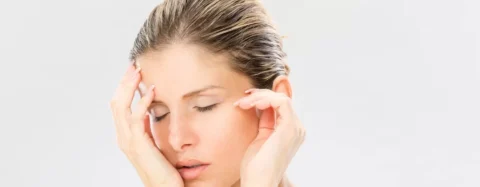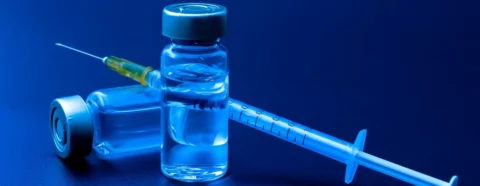Although Botox has been reported to have helped with migraine headaches, not everyone can have the procedure done because of complications, allergies, or financial standing. So migraine sufferers often seek comfort from complementary and alternative therapies.
So what alternatives to Botox for migraines are there? Seeing as migraine headaches typically stem from stress, scientists have looked into alternative stress-reduction methods like biofeedback and relaxation and discovered that they often work. Acupuncture, massage, herbs, and diets are also some examples of alternative headache therapies.
What are the Alternative Options to Botox When Dealing With Migraines?
For patients who want to lessen the frequency of their episodes and migraine headaches, there are a number of prescription therapy alternatives available. While many Botox users have previously tried a couple of the choices listed below, some of these alternative treatments can act as preventive medications.
These medications lower frequent migraines by up to half the number of days per month one would typically experience migraine pain. Some of these have various different drug interactions and are still in clinical trials, studies have partly shown their effectiveness and potential as go-to drugs that are readily available in the market.
1) Anti-CGRPs
Anti-CGRPs are the newest migraine treatment and preventive technology. CGRP, or calcitonin gene-related peptide, is a pain-related protein that alters the size of blood vessels in the brain. Anti-CGRP drugs function by directly counteracting the surge in CGRP levels that occurs during an attack. This lowers the number of episodes, shortens their duration, and relieves pain and other symptoms.
Preventive anti-CGRP medicines are FDA-approved for episodic and chronic migraine and have been shown to be helpful for migraine with or without aura. Anti-CGRP therapy, according to promising research, may be effective for those who have tried and failed conventional migraine prevention therapies, and it has fewer adverse effects than many other drugs.
Anti-CGRPs can assist in migraine symptoms like constricted blood vessels, high blood pressure, migraine pain, and chronic headaches.
2) Anticonvulsants
Anticonvulsants, which are routinely used to treat epilepsy, can also be used to prevent migraine episodes, in fact, researchers have found that effective anticonvulsant therapy can cut the frequency of migraine headaches by half. Anticonvulsants are one of the many migraine drugs that have various other uses.
3) Antidepressants
As the name suggests, antidepressants are an alternative drug to anticonvulsants, used to treat different ailments than the latter. Certain antidepressants have been shown to be an effective long-term migraine preventative in studies.
Tricyclic antidepressants are the most often used class of antidepressants for migraine prophylaxis and migraine headaches. They assist people to maintain a healthy serotonin level, which typically drops during a panic attack or episodic migraine headaches.
4) Beta-blockers
Beta-blockers are a proven migraine preventive medication that is often used to reduce blood pressure or manage irregular heart rhythms. They aid in the relaxation of the brain’s blood vessels and arteries, which dilate during a migraine episode. Beta-blockers also restore regular blood flow by relaxing the blood arteries in your brain.
5) Supplements
Although there is no magic drug that can cure your migraine headaches, taking supplements, which include vitamins, minerals, probiotics, and herbal food, can provide acute treatment for migraine headaches. especially headaches in adults.
A vitamin shortage can sometimes trigger or intensify migraine symptoms, so taking a supplement as part of your regular routine can help. But to verify your condition, your doctor needs to thoroughly detect the insufficiency.
6) Magnesium
Magnesium, a mineral that helps your body regulate muscle and nerve function among other things, may be able to help avoid cortical spreading depression or the wave of brain activity that causes migraine headaches.
Magnesium may also reduce pain by blocking pain-transmitting molecules in the brain. Magnesium appears to be particularly beneficial for patients who suffer from migraines with aura or menstrual migraines, according to research.
7) CoQ10
Coenzyme Q10, or CoQ10, appears to lower the frequency of migraine headaches, according to scientific evidence. CoQ10 has been shown to lessen migraine frequency by lowering CGRP levels that increase during an episode.
In fact, after taking CoQ10, most migraine patients reported a 50% reduction in headache days per month. Because it’s difficult to obtain enough CoQ10 through food, it’s best to take a supplement if you need it.
8) Riboflavin
Riboflavin is a natural medication that has been proven to lower the number of severe headache days that migraine patients get each month in tests. Data suggests that it is a safe and well-tolerated migraine prophylaxis option at a high dose (400mg).
Riboflavin may be found in eggs, green vegetables, lean meats, and dairy products, but you’ll probably need a supplement to acquire enough to avoid migraine episodes by relaxing blood vessels and lowering blood pressure. For those with migraine headaches in adults, having eggs in meals could be a potential migraine prevention tactic.
9) Biofeedback with Electromyography
Biofeedback is a technique for reducing the stress that involves receiving information (feedback) regarding muscle tension, skin temperature, brain waves, drug interactions, and other physiological signals. To measure such indicators, a technician applies microscopic metal electrodes to your skin. On a screen, a machine displays data in the form of numbers, electrical waves, or noises.
According to studies, you can learn to relax certain muscles and reduce the stress that is causing or exacerbating a headache utilizing biofeedback. Biofeedback has been shown in most trials to reduce the duration and frequency of headaches in both children and adults.
Its effects appear to be comparable to many other headache medications, and it can be used to treat migraines early on. Biofeedback allows you to take preventive treatment for chronic headaches by catching potential causes.
When you know when or how your episodic migraine will hit you, migraine patients with headaches can take migraine drugs. You can also learn how to utilize biofeedback by working with a professional at a medical center’s psychology, psychiatry, or integrative medicine department.
10) Stress Management

Chronic migraines and other headaches have been connected to life events that cause more stress, worry, and despair. According to research, combining stress management with antidepressant meds reduces headaches and the need for pain medication.
It may also assist to obtain adequate sleep and maintain a balanced diet, in addition to a regular relaxation practice. Relaxation training can also be taught to you by a professional in psychology, psychiatry, or integrative medicine.
11) Yoga
Yoga studies demonstrate that those who practice yoga in addition to taking migraine medication have fewer and less severe headaches than those who only take medication. Yoga is practiced by about 10% of migraine sufferers. There are certain positions for episodic migraine and headaches in adults that you can utilize as a preventive treatment.
On the other hand, poses that strain or tense your neck, for example, should be avoided. Avoid courses with a lot of heat, exercise, or challenging positions. Migraines may be triggered by these factors. During and after your sessions, make sure you drink lots of water.
12) Acupuncture
Acupuncture has been shown in studies to cause the production of endorphins, which are pain-blocking molecules. It might also instruct your brain to release other chemicals and hormones that communicate between different types of cells, including immune cells.
Acupuncture’s benefits may persist for a long time, making it a unique pain therapy. It can relieve long-term neck and shoulder discomfort, as well as headaches, effects persisting for months.
13) Chiropractic Care
improves the function of your spine, reducing tension throughout your body. Chiropractors move your spine and other joints using their hands or with instruments. According to research, a spinal adjustment may reduce the number of migraine attacks, as well as the severity and duration of such attacks.
A chiropractor may also provide massage and muscular therapy, as well as dietary and exercise recommendations and relaxation techniques. There is no evidence that one chiropractic practice is more effective than another in the treatment of migraine headaches, so just explore until you find one that best suits your needs.
14) Cognitive-Behavioral Therapy (CBT)
CBT is a type of psychotherapy that involves a therapist that can assist you in identifying your stressors. You’ll discover different perspectives on things, allowing you to alter your emotional response.
Training in relaxation and deep breathing exercises using the diaphragm is included in this program. Various muscular groups are contracted and relaxed. Guided visualization and mindfulness are also included.
15) Aromatherapy
Essential oils, concentrated liquids created from flowers, roots, leaves, and other parts of plants, are inhaled or rubbed on the skin in this sort of treatment to help you relax and shift your perception of pain.
16) Dietary Changes
For some people, certain foods like chocolate, aged cheese, citrus fruits, and red wine might cause headaches. If this is the case, attempt to identify and avoid headache triggers that are connected to eating. Keep a meticulous journal of your headache symptoms and food habits to begin.
Only a few studies have been done to see if changing one’s diet will help with headache discomfort. Some studies have discovered that persons who consume less fat have fewer migraines. Others recommend that you supplement your diet with omega-3 fatty acids. Magnesium, riboflavin, coenzyme Q10, and melatonin are among the supplements that may be beneficial. More study is required to determine whether or not they are safe and effective.
Eating a well-balanced diet is the greatest way to go. Avoid fasting or skipping meals. A migraine can be caused by any of these factors. Before beginning a new diet or taking any new drugs, including vitamins, herbs, or supplements, consult with your doctor.
Achieve Your Dream Look With Ethos Aesthetics + Wellness
Millions of individuals have benefited from botox injections and dermal fillers to enhance their face skin over the last 15 years, and you’d be hard pushed to find a medical spa with greater Botox and filler experience than Ethos Spa’s Drs. Monika and Hardik Soni.
We also specialize in dermal fillers for face sculpting and cheek augmentation in addition to Botox cosmetics. Tear troughs, lips, marionette lines, nasal labial folds, cheeks, chins, jawline, and even a non-surgical nose job can all use fillers and greatly improve appearance.
Get the look you’ve always wanted and call us now at (908) 628-1916.







